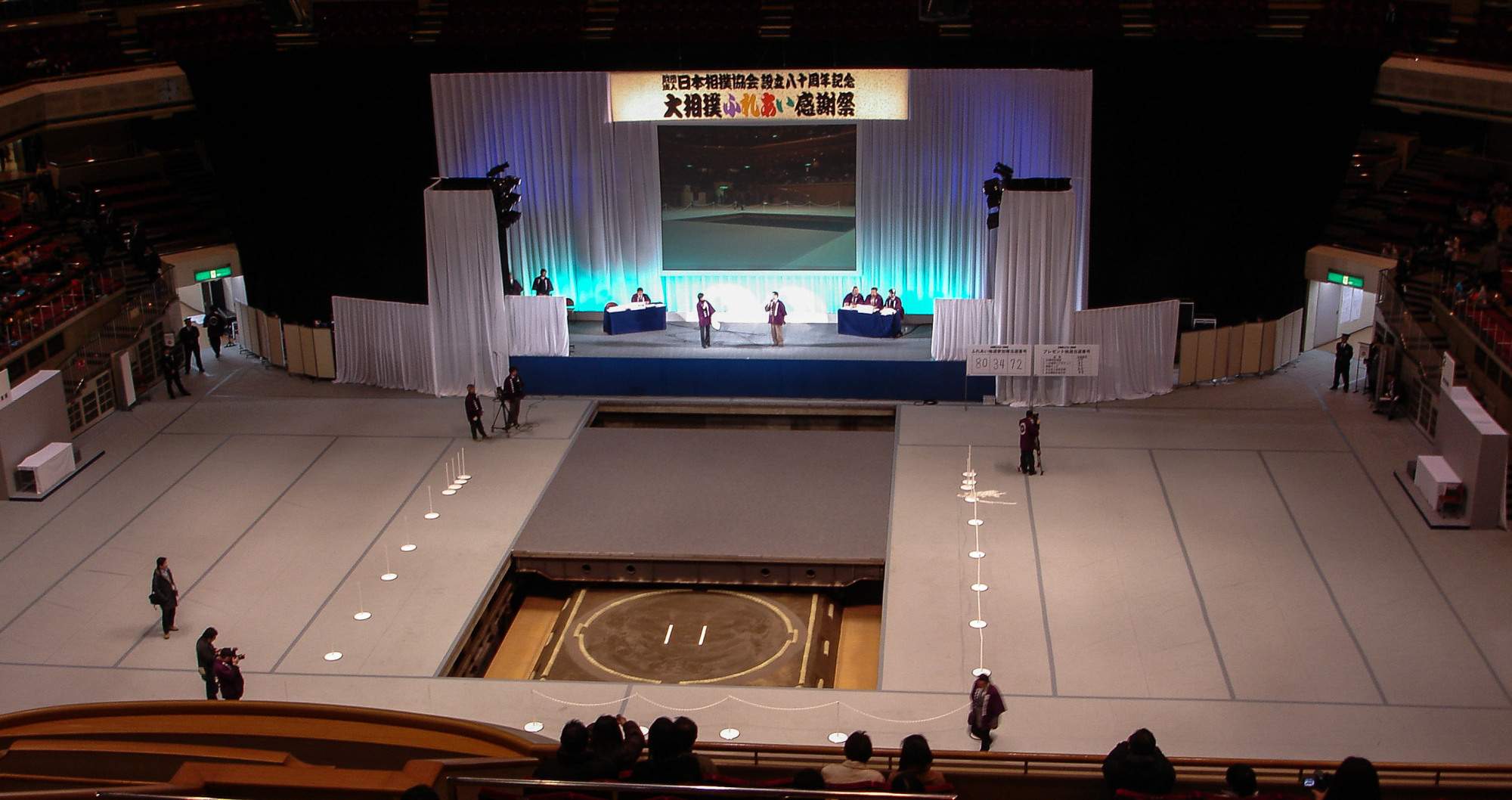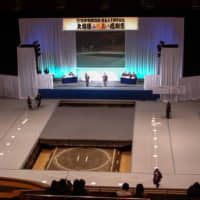Three of the six yearly Grand Sumo tournaments are held in Tokyo's Ryogoku Kokugikan.
The large structure, located next to the Edo-Tokyo Museum in Sumida Ward, opened in 1985. It also houses a sumo museum as well as the offices of the Japan Sumo Association.
The arena has a capacity of 11,098. While it is a sumo-specific venue, the seating and layout are adjustable, allowing it to host everything from professional wrestling to concerts and conventions.
The current Kokugikan — the name means "National Sport Hall" — is the second such building in the Ryogoku area.
The original Kokugikan, located a few hundred meters to the south, was a circular domed structure that could hold up to 20,000 people.
An apartment complex stands on the site now, but a circle inlaid on the courtyard paving shows the location of its ring.
Badly damaged in the American firebombing of Tokyo during World War II, it was taken over by occupation forces after the war and renamed "Memorial Hall."
The JSA moved across the river into the newly built Kuramae Kokugikan in the 1950s before returning to Ryogoku three decades later.
Prior to the construction of the current Kokugikan, then-JSA Chairman Kasugano said he wanted a building that would last at least 50 years.
Although still sufficient for its needs, the current arena is beginning to show its age. A few changes, including the installation of an external elevator, have been made over the years. An additional renovation is scheduled to take place ahead of the 2020 Olympics, when the Kokugikan will host the boxing competition.
One interesting feature of the Kokugikan is that the entire ring can be lowered below ground when events unrelated to sumo are taking place. The arena also has its own kitchens where the yakitori sold during tournaments is produced.



















With your current subscription plan you can comment on stories. However, before writing your first comment, please create a display name in the Profile section of your subscriber account page.